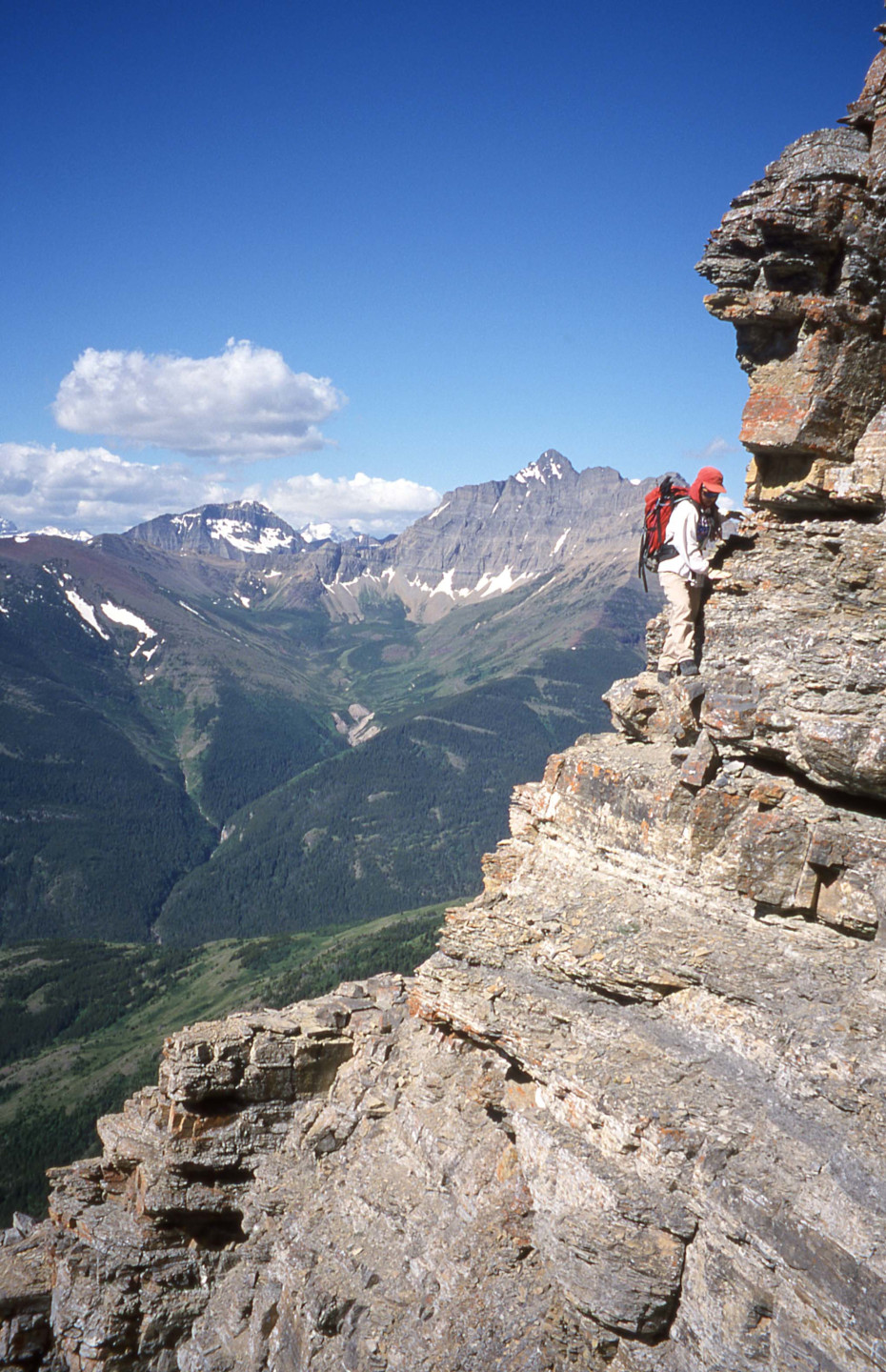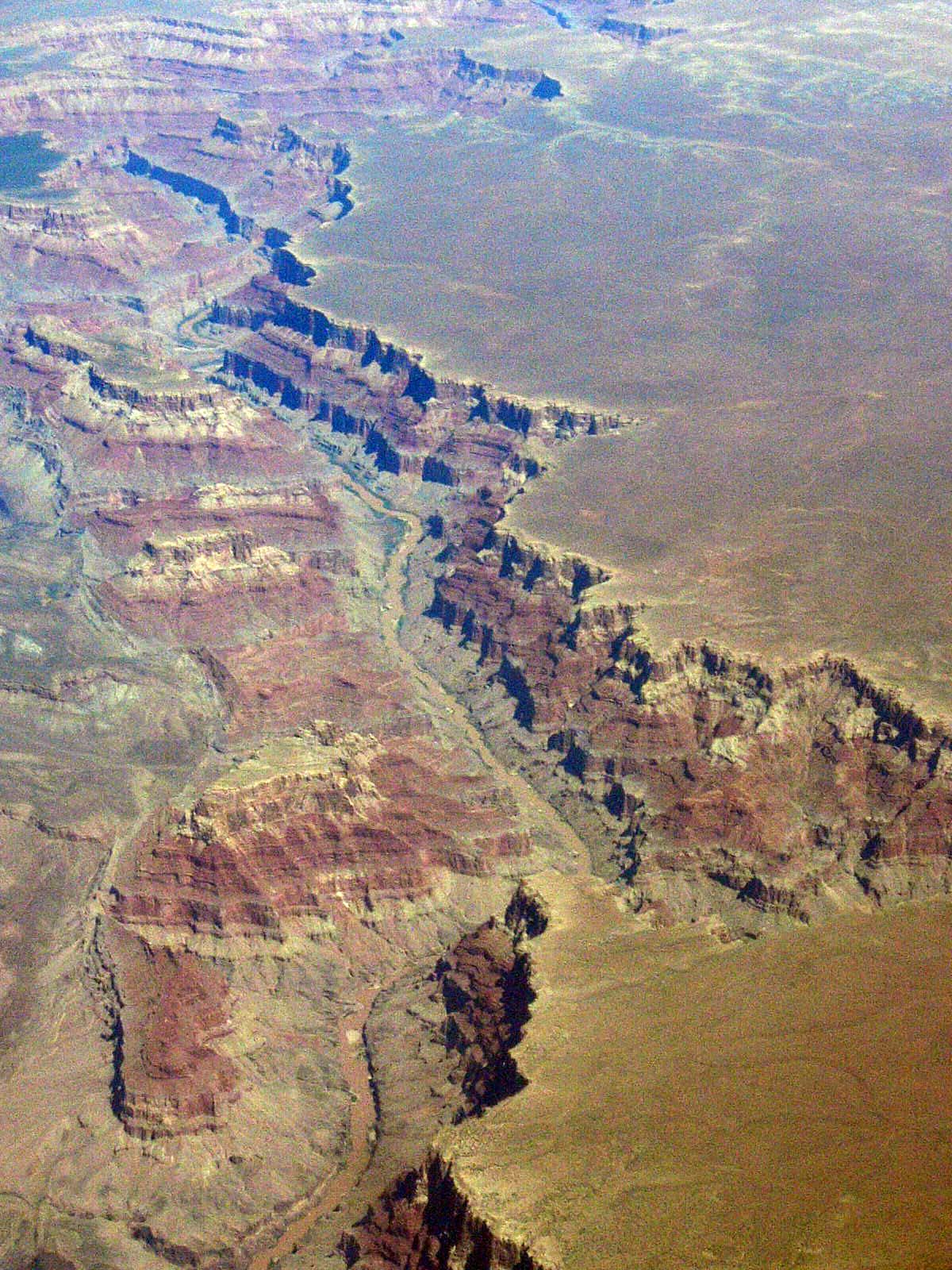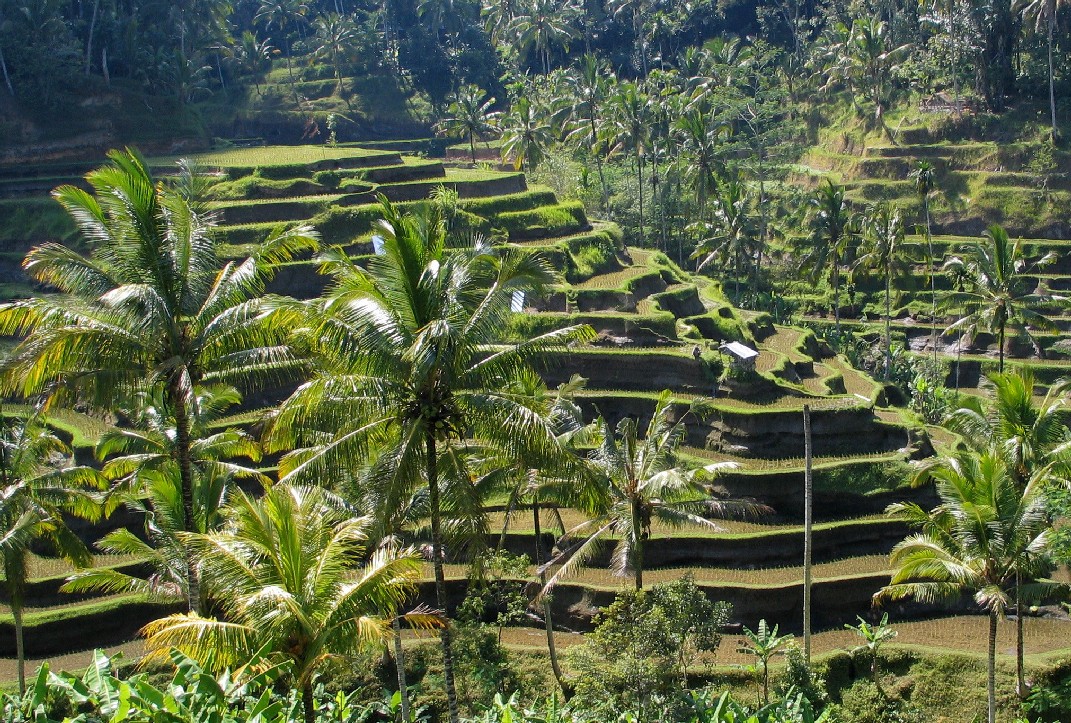|
Canyoning
Canyoning (canyoneering in the United States, kloofing in South Africa) is a sport that involves traveling through canyons using a variety of techniques, such as walking, scrambling, climbing, jumping, abseiling (rappelling), swimming, and rafting. Although non-technical descents such as hiking down a canyon ("canyon hiking") are often referred to as "canyoneering", the terms "canyoning" and "canyoneering" are more often associated with technical descents—those that require rappels and ropework, technical climbing or down-climbing, technical jumps, and/or technical swims. Canyoning is frequently done in remote and rugged settings and often requires navigational, route-finding, and other wilderness travel skills. Canyons that are ideal for canyoning are often cut into the bedrock stone, forming narrow gorges with numerous drops, sculpted walls, and sometimes waterfalls. Most canyons are cut into limestone, sandstone, granite, or basalt, though other rock types are found. ... [...More Info...] [...Related Items...] OR: [Wikipedia] [Google] [Baidu] |
Abseil
Abseiling ( ; ), also known as rappelling ( ; ), is the controlled descent of a steep slope, such as a rock face, by moving down a rope. When abseiling, the person descending controls their own movement down a static or fixed rope, in contrast to lowering off, in which the rope attached to the person descending is paid out by their belayer. Description The technique is used by climbers, mountaineers, cavers, canyoners, search and rescue and rope access technicians to descend cliffs or slopes when they are too steep or dangerous to descend without protection. Many climbers use this technique to protect established anchors from damage. Rope access technicians also use this as a method to access difficult-to-reach areas from above for various industrial applications like maintenance, construction, inspection and welding. To descend safely, abseilers use a variety of techniques to increase the friction on the rope to the point where it can be controlled comfortably. T ... [...More Info...] [...Related Items...] OR: [Wikipedia] [Google] [Baidu] |
Scrambling
Scrambling is a mountaineering term for ascending steep terrain using one's hands to assist in holds and balance.''New Oxford American Dictionary''. It can be described as being between hiking and climbing, rock climbing. "A scramble" is a related term, denoting terrain that could be ascended in this way. Sure-footedness and a head for heights are essential. Canyoning and stream climbing both involve scrambling. Overview Scrambling is ascending or traversing a grade without technical apparatus. Unroped ascent in exposure (heights), exposed situations is potentially one of the most dangerous of mountaineering activities. As soon as an ascent involves a rope, going up or down, it is no longer a scramble. Alpine scrambling Alpine scrambling is scrambling in high mountains and may not follow a defined or waymarked path. The Seattle Mountaineers climbing organization defines alpine scrambling as follows: Alpine Scrambles are off-trail trips, often on snow or rock, with a 'non-t ... [...More Info...] [...Related Items...] OR: [Wikipedia] [Google] [Baidu] |
Canyon
A canyon (; archaic British English spelling: ''cañon''), gorge or chasm, is a deep cleft between escarpments or cliffs resulting from weathering and the erosive activity of a river over geologic time scales. Rivers have a natural tendency to cut through underlying surfaces, eventually wearing away rock layers as sediments are removed downstream. A river bed will gradually reach a baseline elevation, which is the same elevation as the body of water into which the river drains. The processes of weathering and erosion will form canyons when the river's headwaters and estuary are at significantly different elevations, particularly through regions where softer rock layers are intermingled with harder layers more resistant to weathering. A canyon may also refer to a rift between two mountain peaks, such as those in ranges including the Rocky Mountains, the Alps, the Himalayas or the Andes. Usually, a river or stream carves out such splits between mountains. Examples of mountain- ... [...More Info...] [...Related Items...] OR: [Wikipedia] [Google] [Baidu] |
Sawanobori
, or stream climbing (sawa = stream; nobori = climb), is a type of mountaineering in Japan that involves going up mountain streams to their source. Description The sport consists of ascending a tributary of a river along with its features, including climbing waterfalls, traversing ravine walls, and swimming through gorges. Shower climbing of waterfalls in the summer is a highlight. The difficulty of the climb can be judged by the level involved in rock climbing, with the use of ropes and protection, the amount of swimming involved, and the strength of the current. Many climbers pursue the target tributary until they reach its source, or the ideal finish is considered as such. As a rule, the climber moves in the direction opposite the direction of the waterflow. Although people used to climb with waraji (straw shoes), commonly used gear now includes special shoes with a felt sole, a climbing harness, a helmet, and ropes. See also * Canyoning Canyoning (canyoneering in t ... [...More Info...] [...Related Items...] OR: [Wikipedia] [Google] [Baidu] |
Bali Canyoning
Bali (English:; Balinese language, Balinese: ) is a Provinces of Indonesia, province of Indonesia and the westernmost of the Lesser Sunda Islands. East of Java and west of Lombok, the province includes the island of Bali and a few smaller offshore islands, notably Nusa Penida, Nusa Lembongan, and Nusa Ceningan to the southeast. The provincial capital, Denpasar, is the List of Indonesian cities by population, most populous city in the Lesser Sunda Islands and the second-largest, after Makassar, in Eastern Indonesia. Denpasar metropolitan area is the extended metropolitan area around Denpasar. The upland town of Ubud in Greater Denpasar is considered Bali's cultural centre. The province is Indonesia's main tourist destination, with a significant rise in Tourism in Bali, tourism since the 1980s, and becoming an Indonesian area of overtourism. Tourism-related business makes up 80% of the Bali economy. Bali is the only Hinduism in Indonesia, Hindu-majority province in Indonesia, ... [...More Info...] [...Related Items...] OR: [Wikipedia] [Google] [Baidu] |
Badian, Cebu
Badian, officially the Municipality of Badian (; ), is a municipality in the province of Cebu, Philippines. According to the 2020 census, it has a population of 43,735 people. Geography Badian is bordered to the north by the town of Moalboal, to the west is the Tañon Strait, to the east is the town of Dalaguete, and to the south is the town of Alegria. It is from Cebu City. Badian is one of the eight municipalities comprising the 7th Congressional District Cebu Province. Barangays Badian is politically subdivided into 29 barangays. Each barangay consists of puroks and some have sitios. Poblacion The main barangay of Badian is the Poblacion, located in the center of the town. It is the only urban barangay, and the most populous of Badian. It contains the hospital and the marketplace where most of the trading takes place. Many vendors from all over town trade here particularly at weekends. Poblacion is where the local high school is locat ... [...More Info...] [...Related Items...] OR: [Wikipedia] [Google] [Baidu] |
Philippines
The Philippines, officially the Republic of the Philippines, is an Archipelagic state, archipelagic country in Southeast Asia. Located in the western Pacific Ocean, it consists of List of islands of the Philippines, 7,641 islands, with a total area of roughly 300,000 square kilometers, which are broadly categorized in Island groups of the Philippines, three main geographical divisions from north to south: Luzon, Visayas, and Mindanao. With a population of over 110 million, it is the world's List of countries and dependencies by population, twelfth-most-populous country. The Philippines is bounded by the South China Sea to the west, the Philippine Sea to the east, and the Celebes Sea to the south. It shares maritime borders with Taiwan to the north, Japan to the northeast, Palau to the east and southeast, Indonesia to the south, Malaysia to the southwest, Vietnam to the west, and China to the northwest. It has Ethnic groups in the Philippines, diverse ethnicities and Culture o ... [...More Info...] [...Related Items...] OR: [Wikipedia] [Google] [Baidu] |
Kawasan Falls
The Kawasan Falls is a three-stage cascade of clear turquoise water from mountain springs located in the jungles of the Cebu island. The falls are part of the Kawasan River in Badian, Cebu, in the Philippines The Philippines, officially the Republic of the Philippines, is an Archipelagic state, archipelagic country in Southeast Asia. Located in the western Pacific Ocean, it consists of List of islands of the Philippines, 7,641 islands, with a tot .... The water from the falls originates from the Kabukalan Spring and passes through the Kawasan gorge en route to the Matutinao River and the Tanon Strait. The largest waterfall is about 40 meters high, followed by smaller cascades and turquoise water pools that invite swimming. It is a popular tourist destination and is known for its tranquil and relaxing environment, and the adventurous can even enjoy a raft ride or a dive off cliffs. Kawasan tourism As of June 2023, access to the falls was temporarily halted by the Cebu ... [...More Info...] [...Related Items...] OR: [Wikipedia] [Google] [Baidu] |
Wales
Wales ( ) is a Countries of the United Kingdom, country that is part of the United Kingdom. It is bordered by the Irish Sea to the north and west, England to the England–Wales border, east, the Bristol Channel to the south, and the Celtic Sea to the south-west. , it had a population of 3.2 million. It has a total area of and over of Coastline of Wales, coastline. It is largely mountainous with its higher peaks in the north and central areas, including Snowdon (), its highest summit. The country lies within the Temperate climate, north temperate zone and has a changeable, Oceanic climate, maritime climate. Its capital and largest city is Cardiff. A distinct Culture of Wales, Welsh culture emerged among the Celtic Britons after the End of Roman rule in Britain, Roman withdrawal from Britain in the 5th century, and Wales was briefly united under Gruffudd ap Llywelyn in 1055. After over 200 years of war, the Conquest of Wales by Edward I, conquest of Wales by King Edward I o ... [...More Info...] [...Related Items...] OR: [Wikipedia] [Google] [Baidu] |
Cebu
Cebu ( ; ), officially the Province of Cebu (; ), is a province of the Philippines located in the Central Visayas region, and consists of a main island and 167 surrounding islands and islets. The coastal zone of Cebu is identified as a site of highest marine biodiversity importance in the Coral Triangle. Its capital and largest city is Cebu City, nicknamed "the Queen (Catholic) City of the South" having the Second Cardinal, the oldest city and first capital of the Philippines, which is politically independent from the provincial government along with Mandaue and Lapu-Lapu City. The Cebu Metropolitan Area or Metro Cebu is the third largest metropolitan area in the Philippines (after Metro Manila and Metro Davao) with Cebu City as the main center of commerce, trade, education and industry in the Visayas as well as the regional center of Central Visayas. Being one of the most developed provinces in the Philippines, in a decade it has transformed into a global hub for b ... [...More Info...] [...Related Items...] OR: [Wikipedia] [Google] [Baidu] |





